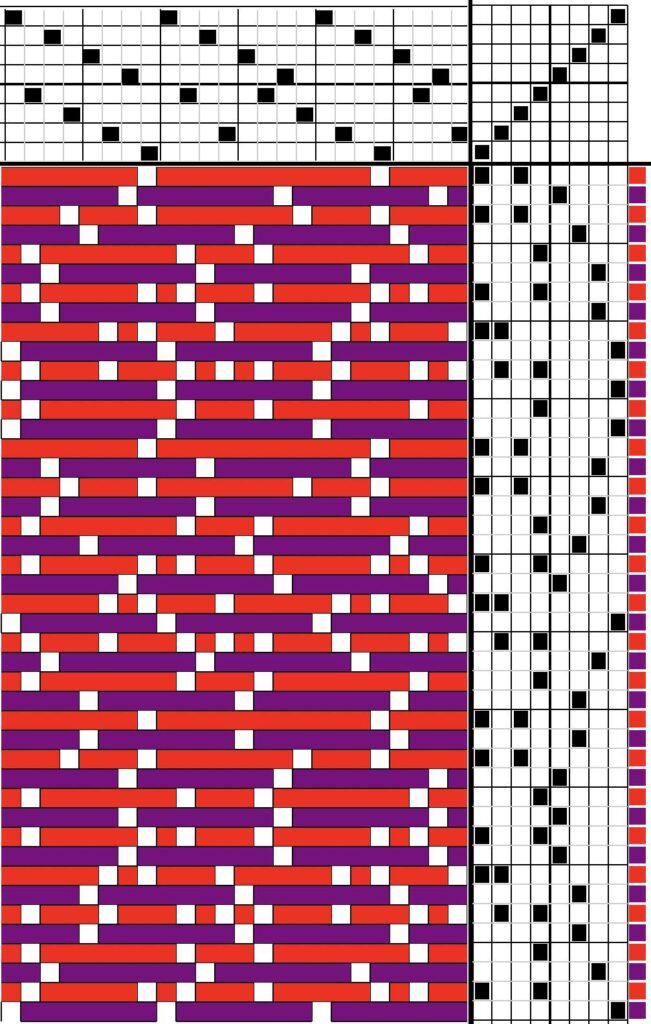Nederlandse versie hier.
While looking for interesting structures to weave, I came across Eva Stossel’s moiré experiment. She was building on experiments and work by Verda Elliott to obtain the moiré effect in weaves. I was immediately fascinated. Only I did have a problem, the technique explained there is meant for a 16 shaft loom where mine has only 8, so I made another version that does fit on my loom.
The moiré effect is best known from the graphic arts world, the unwanted flowing curved lines across a photograph that can occur as a result of misplaced grids in the printing process. You can also encounter it in videos when someone in the recording is wearing a shirt with thin lines.
To get this effect, Eva and Verda used 15 shafts instead of 16. This is because an odd number of shafts is more likely to achieve the moiré effect. But with 8 shafts I have far fewer options, so I used an even number anyway and started experimenting (more) in the weft itself. I do use the binding drawings in designing series of wefts. In most weaving software, after some fiddling with the binding drawing, you can convert everything at once to an “lift plan,” the wefts for a table loom. There again, you can adjust each wefts, although I didn’t do that in the final moiré drawing.
To achieve the moiré effect in the weave, you divide the shafts and weft into two combined weaves where you already insert some kind of defect in the warp. The back four shafts have a regular diagonal threading as in twill weave, and in the front four shafts the “steepness” of that diagonal varies. If you look at the binding drawing you will see that only the upper right and lower left are used. Top left and bottom right are consistently not used so you are really weaving two fabrics together. I did play around with it, but it didn’t work for me to deviate from this. In the warp and in the weft, you always alternate in making the bindings for one pattern and then the other.
For the warp I used cottonline 22/2, which is the same thickness as cotton 8/2, with an 80/10 reed. For the weft, I used 8/2 cotton, which is less matte than cottonline. After much puzzling and weaving, I arrived at a variation that I found most similar to the experiments I found on Eva Stossel’s blog. And actually felt like a moiré effect. I also came across other results during the process that are not necessarily moiré, but are fun to weave. More noise or chaos with movement in it.



Moiré weave for 8 shafts. On the right is the lift plan for table loom. I did not change anything in the weft after converting to elevator plan so it can also be used on a treadle loom.
wif file for table loom moire-tableloom-8shafts.wif
wif file for stair loom moire-treadleloom-8shafts.wif



After drawing and weaving several variations, I arrived at this wavy nois weave. On the left the earlier attempts where the bindings and flotations did not correspond finely with each other. On the right my final design. For table loom.
Wif file for table loom noise-tableloom-8shafts.wif


A variation consisting mostly of flotation. At the weft, I reversed the alternating colors. For table loom.
Wif file for table loom swing-tableloom-8shafts.wif
See Eva Stossel’s blog for moiré on 16 (or actually 15) shafts

